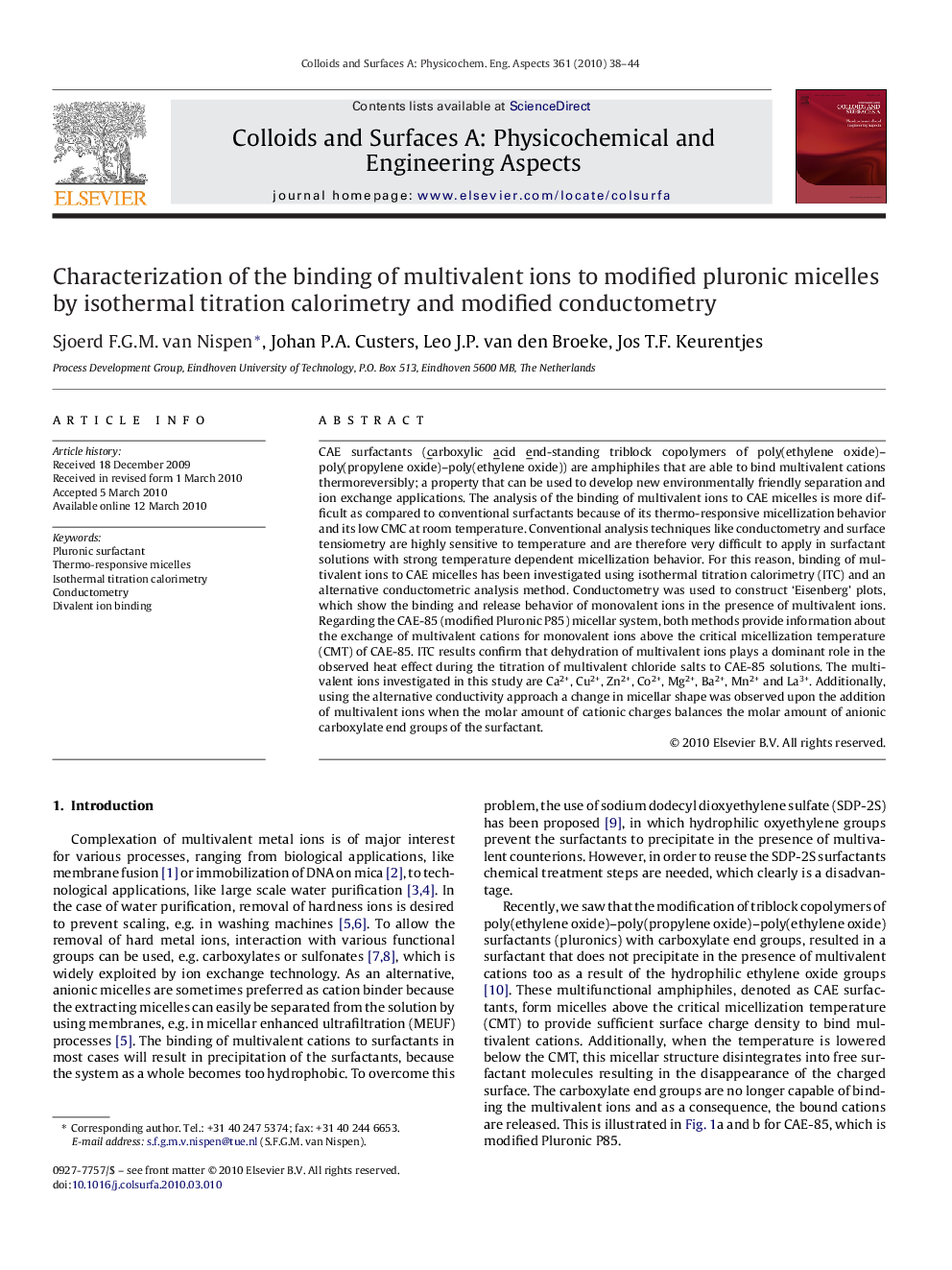| Article ID | Journal | Published Year | Pages | File Type |
|---|---|---|---|---|
| 595392 | Colloids and Surfaces A: Physicochemical and Engineering Aspects | 2010 | 7 Pages |
CAE surfactants (carboxylic acid end-standing triblock copolymers of poly(ethylene oxide)–poly(propylene oxide)–poly(ethylene oxide)) are amphiphiles that are able to bind multivalent cations thermoreversibly; a property that can be used to develop new environmentally friendly separation and ion exchange applications. The analysis of the binding of multivalent ions to CAE micelles is more difficult as compared to conventional surfactants because of its thermo-responsive micellization behavior and its low CMC at room temperature. Conventional analysis techniques like conductometry and surface tensiometry are highly sensitive to temperature and are therefore very difficult to apply in surfactant solutions with strong temperature dependent micellization behavior. For this reason, binding of multivalent ions to CAE micelles has been investigated using isothermal titration calorimetry (ITC) and an alternative conductometric analysis method. Conductometry was used to construct ‘Eisenberg’ plots, which show the binding and release behavior of monovalent ions in the presence of multivalent ions. Regarding the CAE-85 (modified Pluronic P85) micellar system, both methods provide information about the exchange of multivalent cations for monovalent ions above the critical micellization temperature (CMT) of CAE-85. ITC results confirm that dehydration of multivalent ions plays a dominant role in the observed heat effect during the titration of multivalent chloride salts to CAE-85 solutions. The multivalent ions investigated in this study are Ca2+, Cu2+, Zn2+, Co2+, Mg2+, Ba2+, Mn2+ and La3+. Additionally, using the alternative conductivity approach a change in micellar shape was observed upon the addition of multivalent ions when the molar amount of cationic charges balances the molar amount of anionic carboxylate end groups of the surfactant.
Graphical abstractFigure optionsDownload full-size imageDownload as PowerPoint slide
